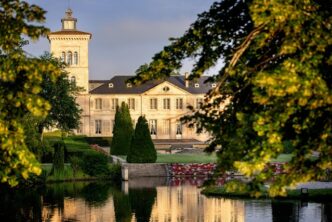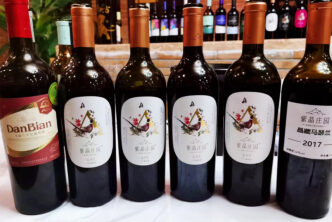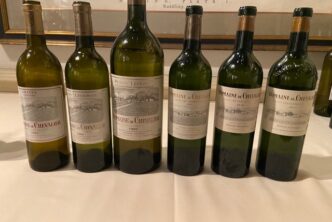Founded in 2017, XIGE Estate is a relatively young Chinese winery, but easily one of the most impressive. The grounds and the buildings are not just beautiful, but awe-inspiring; there really isn’t anything quite like this winery in China (and that’s saying something, given there are many beautiful wineries in the country). More importantly, at XIGE they have managed to successfully couple aesthetics with function, making very good to outstanding wines at all price points; and this in a manner and with a success rate that has proven elusive for many other similarly large wineries (and this not just in China). However, what I find most interesting about XIGE Estate is its ongoing research on different grape varieties, in an effort to identify those that are most suited to the specific terroirs the winery owns or farms vineyards in; in fact, though XIGE’s home base is the Qingtongxia subregion of Ningxia, it owns vineyards all over China (in this the company is remarkably similar to Australia’s Penfold’s, XIGE’s role model of sorts). One of the grape varieties that XIGE has intelligently focused on is Cabernet Gernischt, a unique grape variety typical of China.
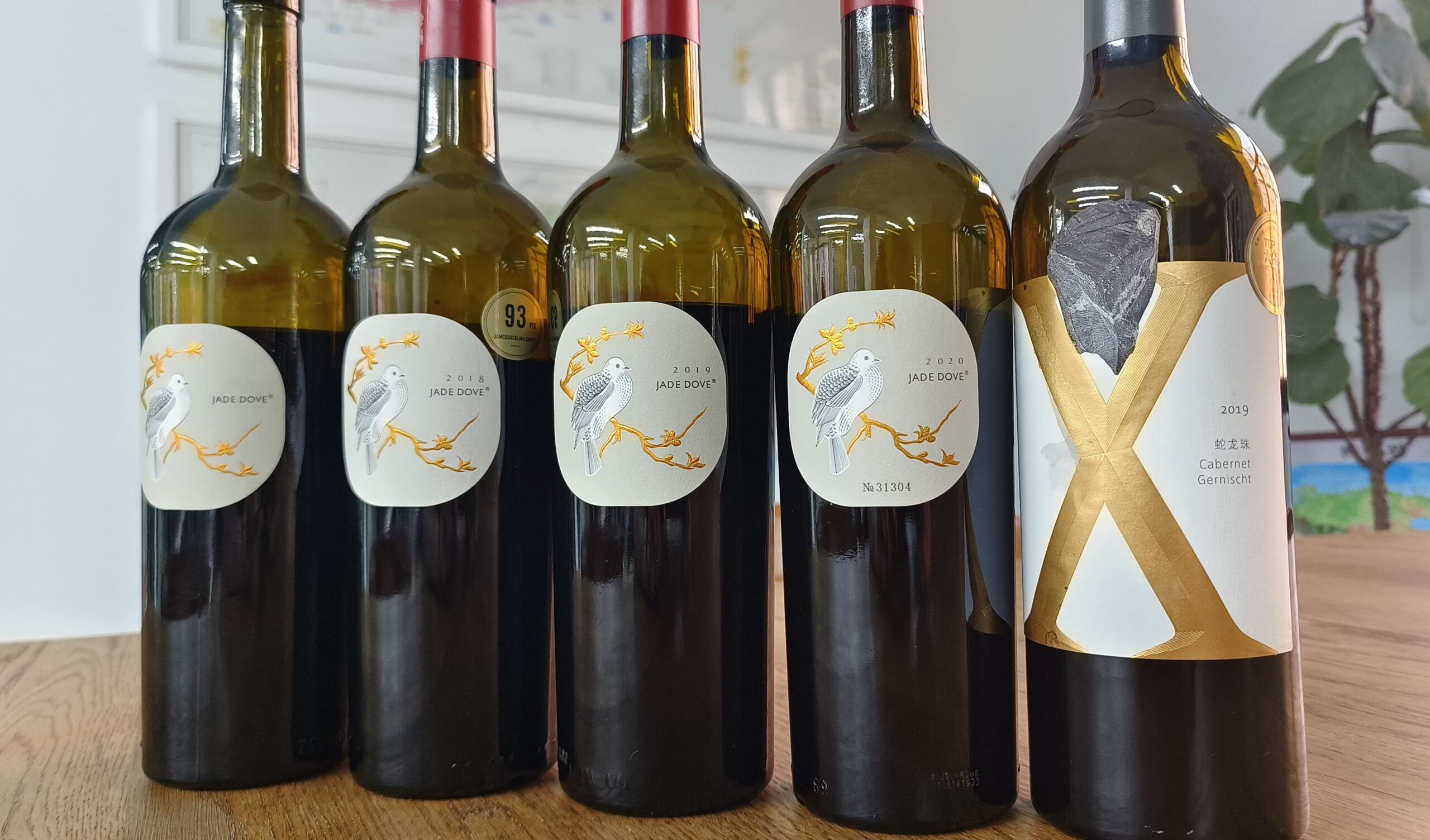
Getting to know Cabernet Gernisht; no, it’s not Cabernet Franc or Carmenère
Cabernet Gernischt is one of the three wine grapes, along with Marselan and Petit Manseng, that give China’s most interesting and most unique wines. And in some respects, arguably the country’s best red wines.
Ten years ago, I was invited as a speaker, along with Jancis Robinson, to the first edition of the China Wine Summit (China’s most important and prestigious wine fair devoted to quality Chinese wines). I and the other speakers were especially surprised by the quality and the level of the Marselan and Cabernet Gernischt wines; and as there weren’t many in the sea of generally not-so interesting Cabernet Sauvignon and Merlot wines that were unleashed on us, their sticking out from the pack was already telling us something. For sure, two of my ten favourite wines (and one especially so) the day of the CWS wine competition were both made with Gernischt, which led me to want to know more about the grape. And today, more than ever, when I visit wineries in China I have found that it is the Cabernet Gernischt (and the Marselan and Petit Manseng) wines that are almost always the best wines I taste each and every time.
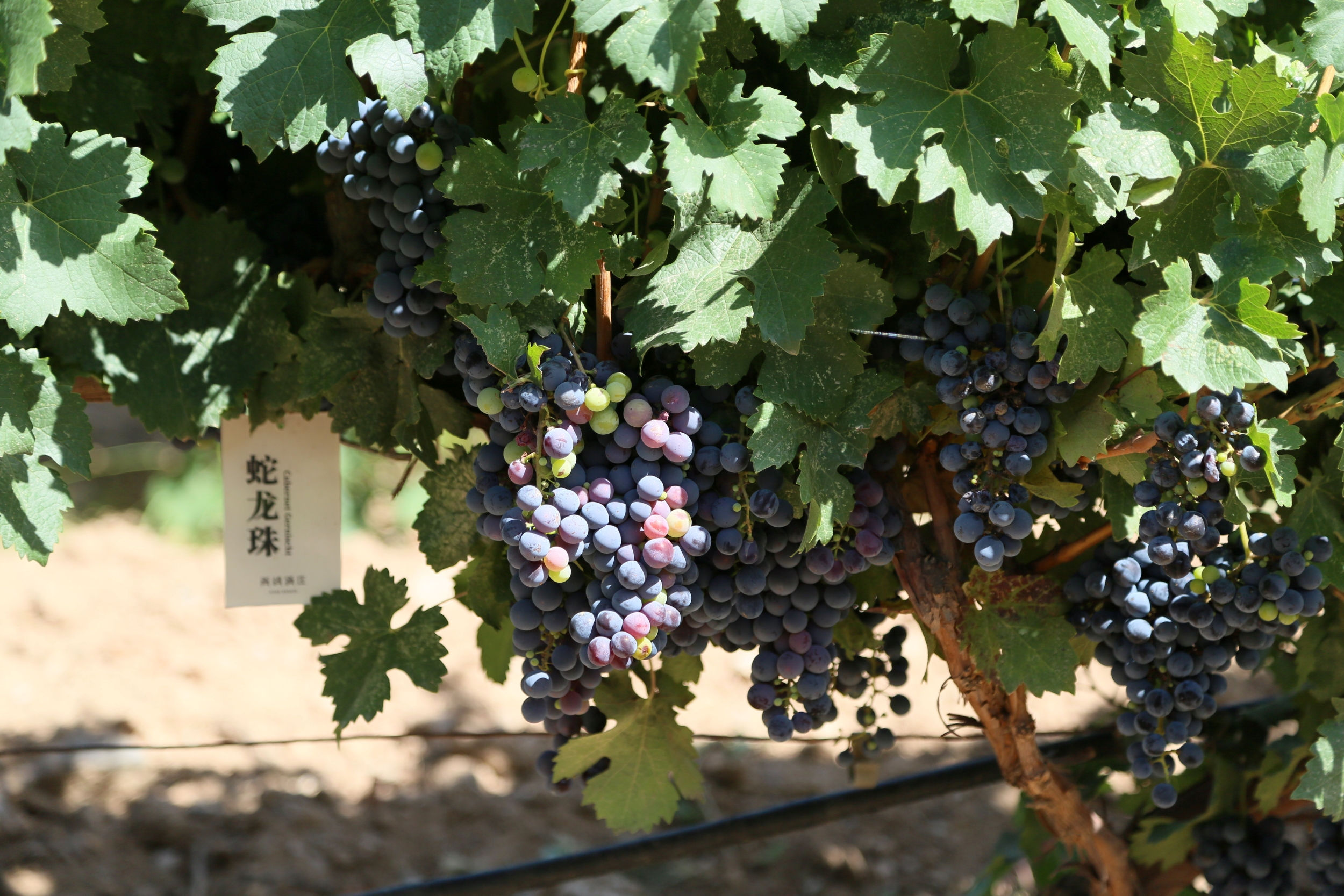
Cabernet Gernischt was first brought to China in 1892 by the Changyu wine company located in the Shandong province. Whether it was a single variety or a mix (gemischt, in German, that later, maybe, became gernischt) of Cabernet Franc and Carmenère cuttings is unclear. From a genetic standpoint, Cabernet Gernischt has been genetically linked both to Cabernet Franc and to Carménère. But to be crystal-clear, there are various studies that have associated Cabernet Gernischt with one or the other, and not just one of those: so people citing only Carmenère as the possible alias of Gernischt are not just wrong, but lazy too, because they are obviously not doing their homework. Furthermore, and this is important, I have written many times before that just because two wine grapes are said to be genetically identical, it does not mean that they really are. Anyone with even a minimal understanding of genetics and biological science knows and understands this well. This is because the methodology that is employed in genetic research to say two things are “identical” is limited in many aspects, not the least of which is that the grape varieties in the vineyard on which the genetic testing is carried out are often misidentified to begin with. Even more importantly, it is well-known that the grapevine is a plant that undergoes mutations very easily: after just a few reproductive cycles, the grapevine you planted is no longer the same, “identical”, grapevine as the one that was planted. It follows that grapevines that have lived for decades in a specific environment adapt to that habitat by modifying their genotypes in response to the environmental stimuli (if they didn’t, they would inevitably succumb in new, potentially unfriendly, environments because of their failure to adapt to them). Therefore, the Cabernet Gernischt of China has very little in common with the Carmenère and Caberent Franc of France, northern Italy, and even less with that of Chile. Old vine Cabernet Gernischt looks and behaves differently from Cabernet Franc and Carmenère, and the wines of each three are different enough too, that it can be considered a distinct variety altogether (once again, it’s not just me saying that, but there are important university research studies saying the same thing). At the very least, if we want to believe that Gernischt derived from either one of Cabernet Franc or Carmenère, it is then more correct to view China’s Cabernet Gernischt as a biotype of Cabernet Franc or Carménère (if it ever was in fact one of those two originally) that has specifically adapted to the various, highly diverse Chinese terroirs it has been planted in. As a result of such adaptations, the Cabernet Gernischt of China expresses wines that are unlike those made elsewhere with Cabernet Franc and/or Carmenère. This is why, in my opinion, it is not unreasonable to view China’s Cabernet Gernischt (older vines and new plantings obtained from massal selections of older Chinese Cabernet Gernischt) as a Chinese wine grape. Clearly, that would not be the case if wineries go, or were to go, planting Cabernet Franc and/or Carmenère from nurseries that they are told are plants of Gernischt “because they are all one and the same thing”. No, they are not, as I have just explained: those plants/clones really are of Caberent Franc and Carmenère, and nurseries everywhere will excuse me, China doesn’t need them. Certainly not in lieu of their Cabernet Gernischt, if that is what they want to plant.
Over the years, I have come to know of a number of well-made Chinese Cabernet Gernischt wines boasting noteworthy levels of purity, perfume and lightness of being. While neither extremely full-bodied nor hugely structured (not the characteristics of Cabernet Gernischt wines), they are wines that offer uncommon refinement and fragrance, with bright, perfumed aromas and juicy flavours of mostly red fruit and sweet spices, with a complicating sprinkle of blue/black fruit and herbs. In ultimate analysis, Chinese Cabernet Gernischt wines offer aromas and flavours not found in any other wines of the world. By contrast, Cabernet Sauvignon wines are a dime a dozen, and wine loving public is frankly bored by them (or are you under the impression that Bordeaux is still enjoying booming sales nowadays?). Thanks to Gernischt, therein lies an opportunity for Chinese wineries to capitalize on. Now look what I’ve just done: China gets to capitalize on something. Isn’t wine just wonderful?
However, for all the many qualities of Chinese Gernischt wines, there is no denying that plantings of Cabernet Sauvignon, for example, are still much more abundant throughout the country. There are mostly three reasons explaining why Gernischt in China has had a slow path to success. First, because of Cabernet Sauvignon’s perceived greater importance as a quality grape variety, everybody has planted a ton of it all over China (and in this respect, French wine consultants certainly haven’t hurt any, given they recommend planting Cabernet Sauvignon at every turn of their swizzle stick). A bad consequence of this is that farmers often rush to harvest Gernischt when it’s not yet fully ripe, so that they can concentrate their attention on the better paying Cabernet Sauvignon. Second, being a late ripening variety, Cabernet Gernischt needs to reach optimal physiologic ripeness or its wines will be unfailingly green and unpleasant; in fact, not just picking it at the ripe time but also planting it in the right terroir is of paramount importance (for instance, plenty of sunlight is a must). But its bunch is more loosely-packed than that of Cabernet Sauvignon (or more precisely, of the Cabernet Sauvignon clones first planted in China) and Gernischt is generally more resistant to the vagaries of weather and rot-associated problems, making it a better fit for many Chinese terroirs (such as Shandong, where monsoon effects are commonplace). Third, a lot of the older Cabernet Gernischt vines in China are virused, and that’s a real pity [not because the wines aren’t good (quite the contrary), but because of the sanitary and legal implications of planting diseased grapes].
Nevertheless, the quality of Gernischt wines is such that many in the country have revaluated or are revaluating the grape, and it is to the XIGE Estate’s credit that it has been a forerunner of the movement. XIGE boasts 300 hectares of Cabernet Gernsicht plantings, an extension of vineyards devoted to this grape variety that are most likely second only to those of Changyu. At 26-27 years of age, XIGE also has one of the largest expanses of old vine Cabernet Gernischt in China.
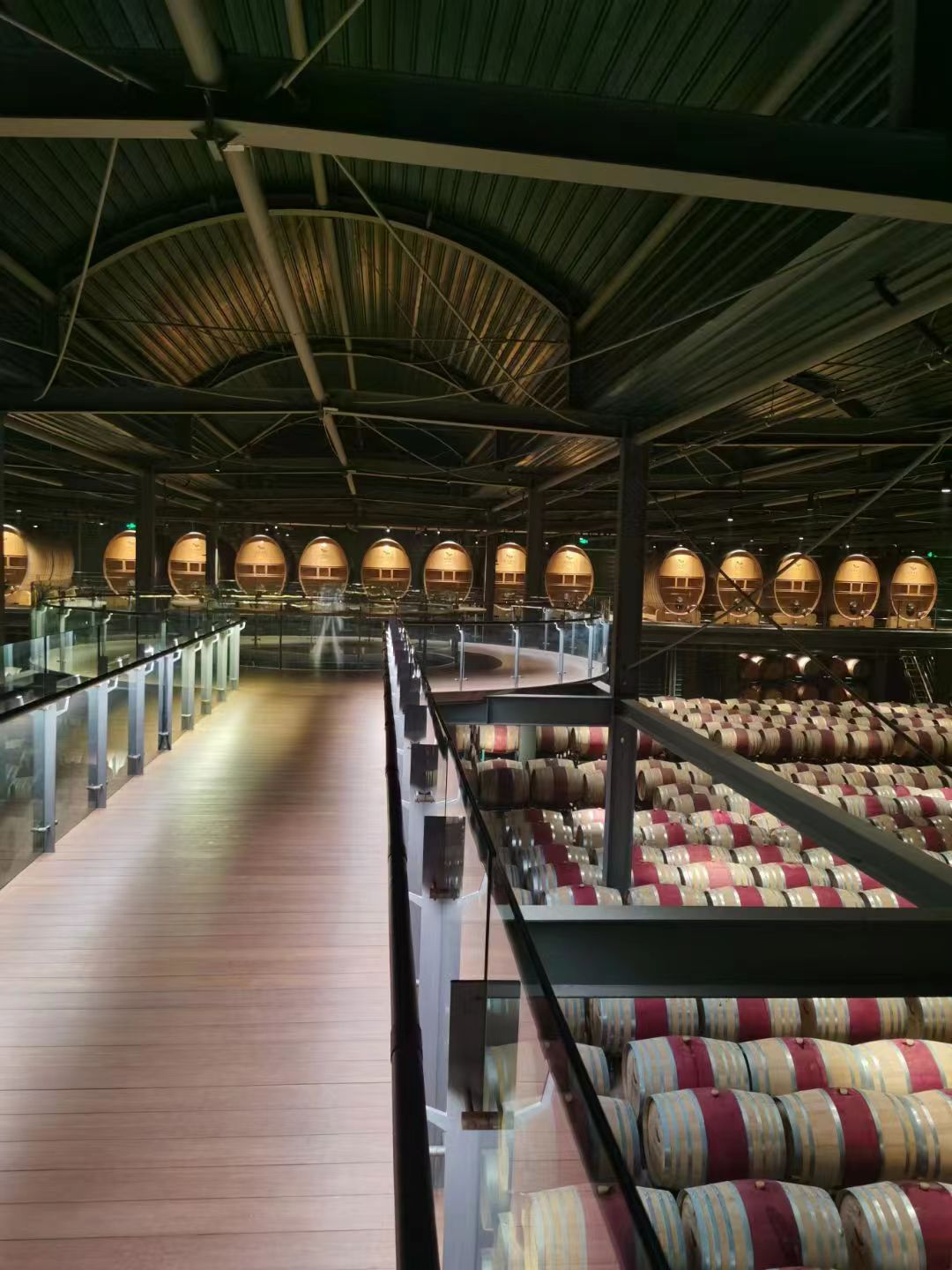
The XIGE Estate
At XIGE Estate, they make millions of bottles a year of wine from roughly 2100 hectares that are all actually planted to vines (the estate also grows thousands of trees), with about twenty different grape varieties. They don’t yet make wine from all of them as the study period is necessarily long in winemaking, but there are a number of very promising varieties the wines of which will be coming out shortly. For example, their 100% Malbec wine is already really quite good. The winery has many different brands selling at different price points, so that there are potentially about twenty labels (SKUs) in total (some haven’t been released for sale yet). For the moment, the winery is focused on two main brand lines (XIGE N & Jade Dove) that offer about twelve different labels.
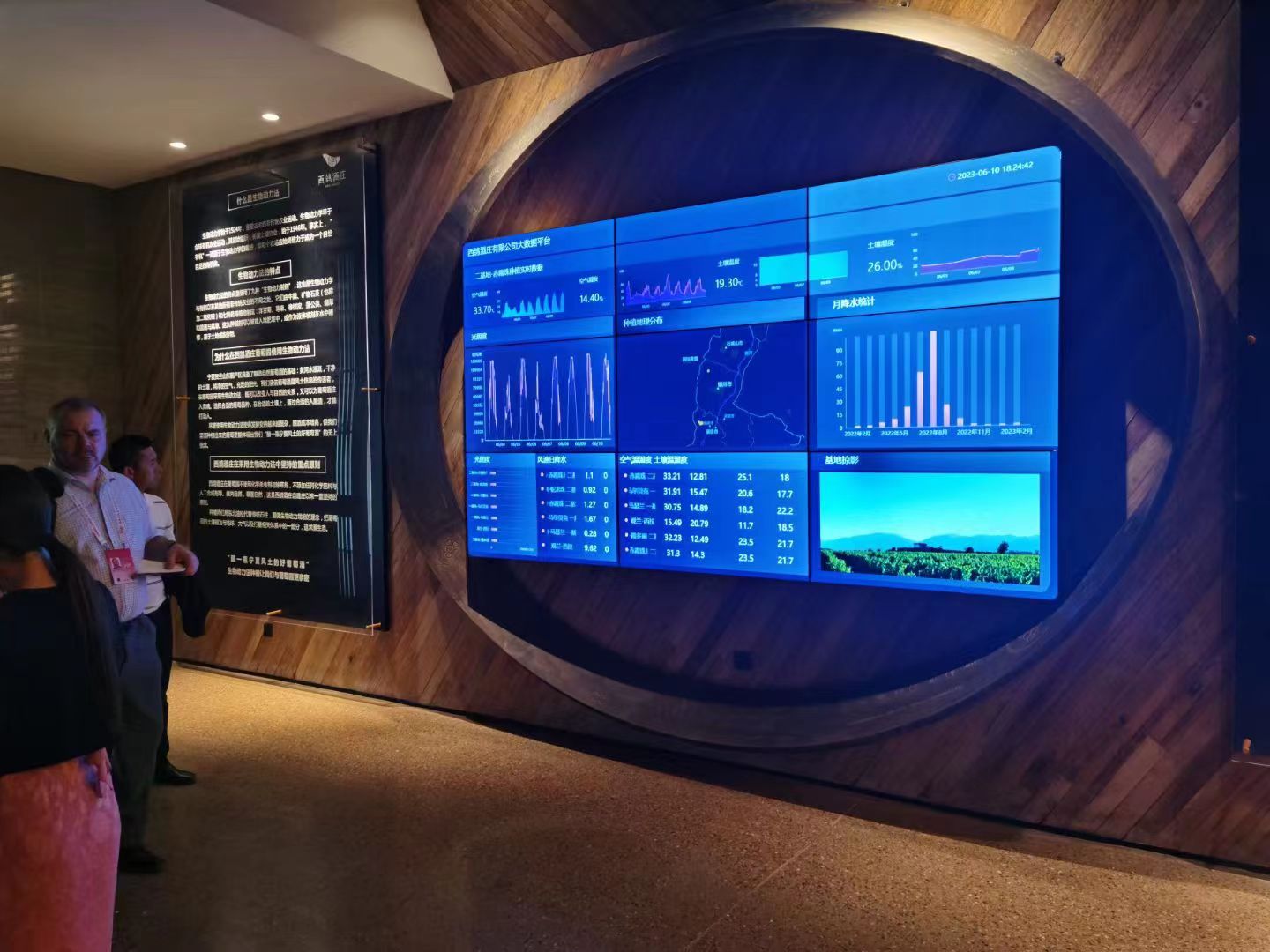
The average age of the vines varies: about 1000 ha are of 26-27 years old vines (planted in 1997-1998); 1100 hectares are of recently planted vines (planted between 2017 and 2022) that are one to six years old vines. The oldest vineyards are mainly of Cabernet Sauvignon, Cabernet Gernischt, Chardonnay, Pinot Noir and few other varieties (but these are present in only small percentages). As mentioned earlier, terroir is important at XIGE. Unlike at other Chinese wineries where trying to figure out the exact sub-denomination and /or region the grapes come from (and hence the wine) is not especially easy with often confusing statements made, not so at XIGE. The XIGE labels carry the name “Dove Mountain” (the lake on the XIGE Estate property, located on the western side of the Dove Mountain, is called West Dove Lake) not because it sounds cute (OK, maybe too) but do so because it is the key wine region within the Qingtongxia sub-region of the Ningxia Eastern Helan Mountains wine appellation. Other examples of Ningxia sub-regions are, for example, Yongning and Yinchuan: often, at many wineries they will tell you that they are all located in Yinchuan (even when they are in Yongning) which makes little sense. All the XIGE wines back labels use the logo of the Ningxia Helan Mountains Chinese Geographical Indication as well as that of Dove mountain. XIGE Estate itself is named after the place it calls home: “Xi” in Chinese means “West”, and “Ge” means “Dove”. However, in an understandable and logical attempt to promote their Chinese identity, the winery chose not to translate the name of the winery into English. (And anyways, “XIGE” is very easy to pronounce and remember in any language.) The Dove Mountain terroir is characterized by a strong wind which helps lower disease pressure, while helping maintain cooler daytime temperatures. The soil is mainly composed of sand and small to mid-sized gravels on the surface. By contrast, in the northern part of the Helan Mountains Wine Region, there is much less sand and the gravel is much bigger in size, with plenty of large underground rocks present. Furthermore, Qingtongxia has copious red clay deep below the surface: the clay presence is an important feature given that Ningxia in general is not blessed with large amounts of rainfall, so the clay helps with water retention.
The wines
The winemaking of XIGE Estate’s Cabernet Gernischt wine hasn’t changed much over the years, save for a few specific steps related to aging. Fermentation for the Jade Dove Cabernet Gernischt takes place at 25 degrees Celsius and the wine stays on the skins for 7-15 days (while it’s fifteen days for the top wine, the Cabernet Gernischt X bottling). Oak aging regimens have instead varied a good deal more. The 2017 vintage for example, which was the first monovariety Cabernet Gernischt wine XIGE ever produced, was aged in 100% new oak, something that has not been done again (even though, oak and all, it’s actually a great wine); that year, about 80% of the oak was French and 20% was American (the presence of American oak is a bit of a characteristic of this specific wine). By contrast, the 2018 vintage was aged in 75% new barrels of which 10% were of American oak. The 2019 and 2020 vintages were aged in 50% new oak (10% American).
The wines in this tasting report
All the wines in this report were tasted at the China Wine Summit masterclass devoted to a vertical of XIGE Estate Cabernet Gernischt. A few other estate wines were included in the tasting to help better understand the winery’s production and winemaking style and philosophy.
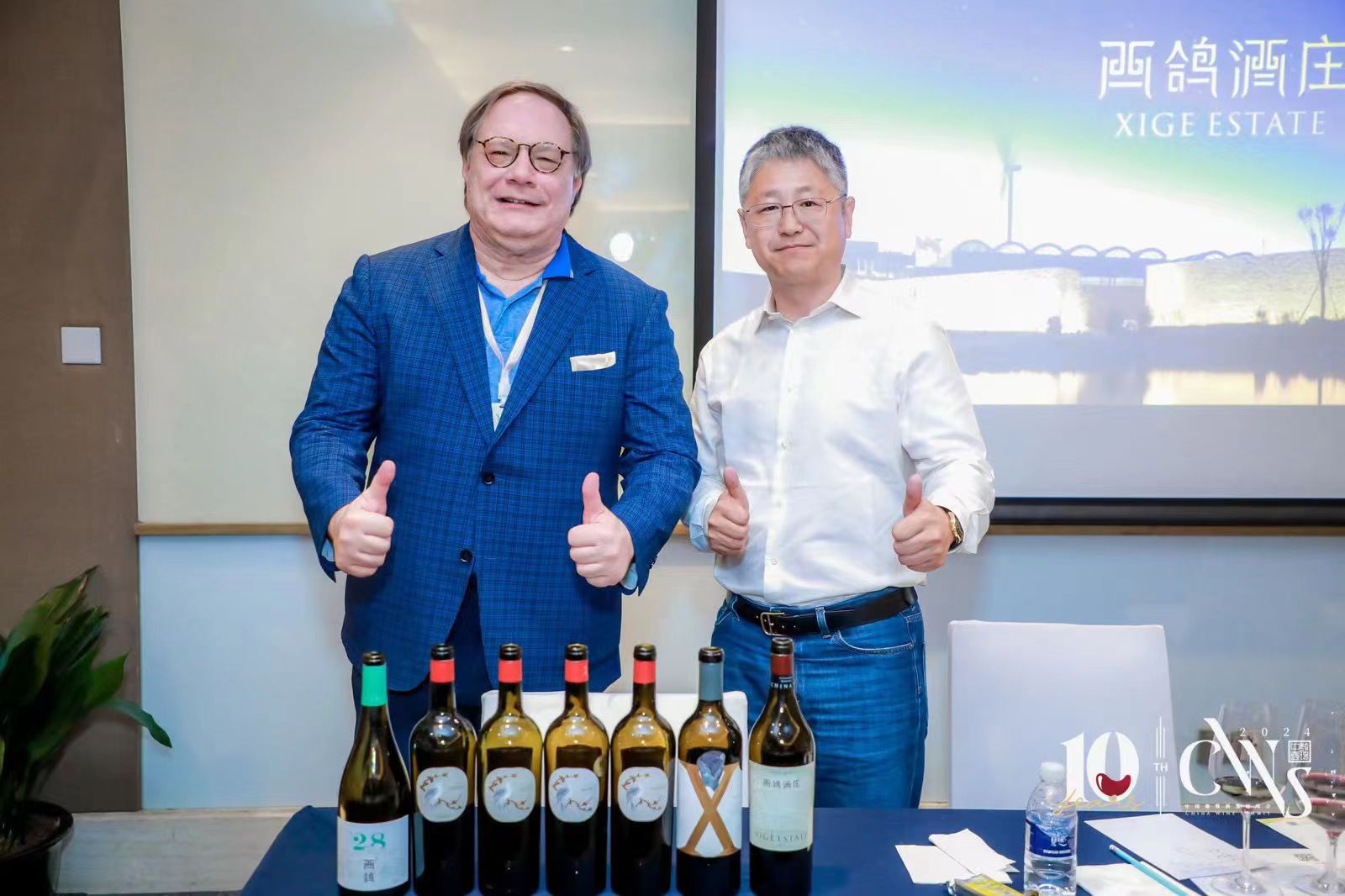
XIGE Estate 2021 Chardonnay N28 Qingtongxia Ningxia 93
Vivid golden-tinged straw yellow. Ripe orchard fruit (apple, pear, apricot) and tropical nuances (banana and guava) are complemented by vanilla and butter; the oak is very well-dosed and is not bothersome at all, but rather adds complexity. Smooth and round, with concentrated flavours similar to the aromas, this tastes long and precise on the sweetly spicy and mellow aftertaste. It’s a world-class Chardonnay wine that is easily the equal of many notable names from anywhere in the New World, the wines with which it shares an aroma and taste profile. I have tasted this wine repeatedly over the last couple of years, and it is still as good as ever, possibly even better now that it has a little bottle age on it and the oak has been somewhat absorbed. Drinking window: 2024-2028.
XIGE Estate 2020 Cabernet Gernischt Jade Dove Single Vineyard Qingtongxia Ningxia 92+
Bright, dark red. Floral and peppery high notes lift aromas of raspberry, dried herbs, cedar and earth on the rather youthfully reticent nose. Then saline nuances complement subtle flavours of raspberry, minerals and musky herbs. At once smooth and concentrated, this classically austere red finishes with polished tannins and excellent rising length. A hint of raspberry liqueur emerges at the back helping to further convey the notion that there’s plenty of fruit lurking beneath the youthful tannic architecture. The 2020 vintage was aged in 50% new oak (10% American). This is a very promising wine (hence the ‘+’ on my score) but unfortunately there isn’t as much of it to go around: three days of frost that hit late (on April 22-24) in which temperatures reached -4.5 degrees Celsius led to greatly reduced crops. Drinking window: 2026-2035.
XIGE Estate 2019 Cabernet Gernischt Jade Dove Single Vineyard Qingtongxia Ningxia 94
Bright red ruby. Concentrated, complex and showy aromas and flavours of red fruit, blueberry nectar, botanicals, candied violet and sweet spices have a decadent quality. This teeters on just this side of being jammy, but has enough harmonious acidity to taste lifted and lively. Closes long and precise on the creamy, ripe, finish that features repeating notes of strawberry and aromatic herbs. About 150,000 bottles/year, made depending on the vintage, but a wine of this quality made in such numbers is impressive no matter how you look at it. Drinking window: 2026-2038.
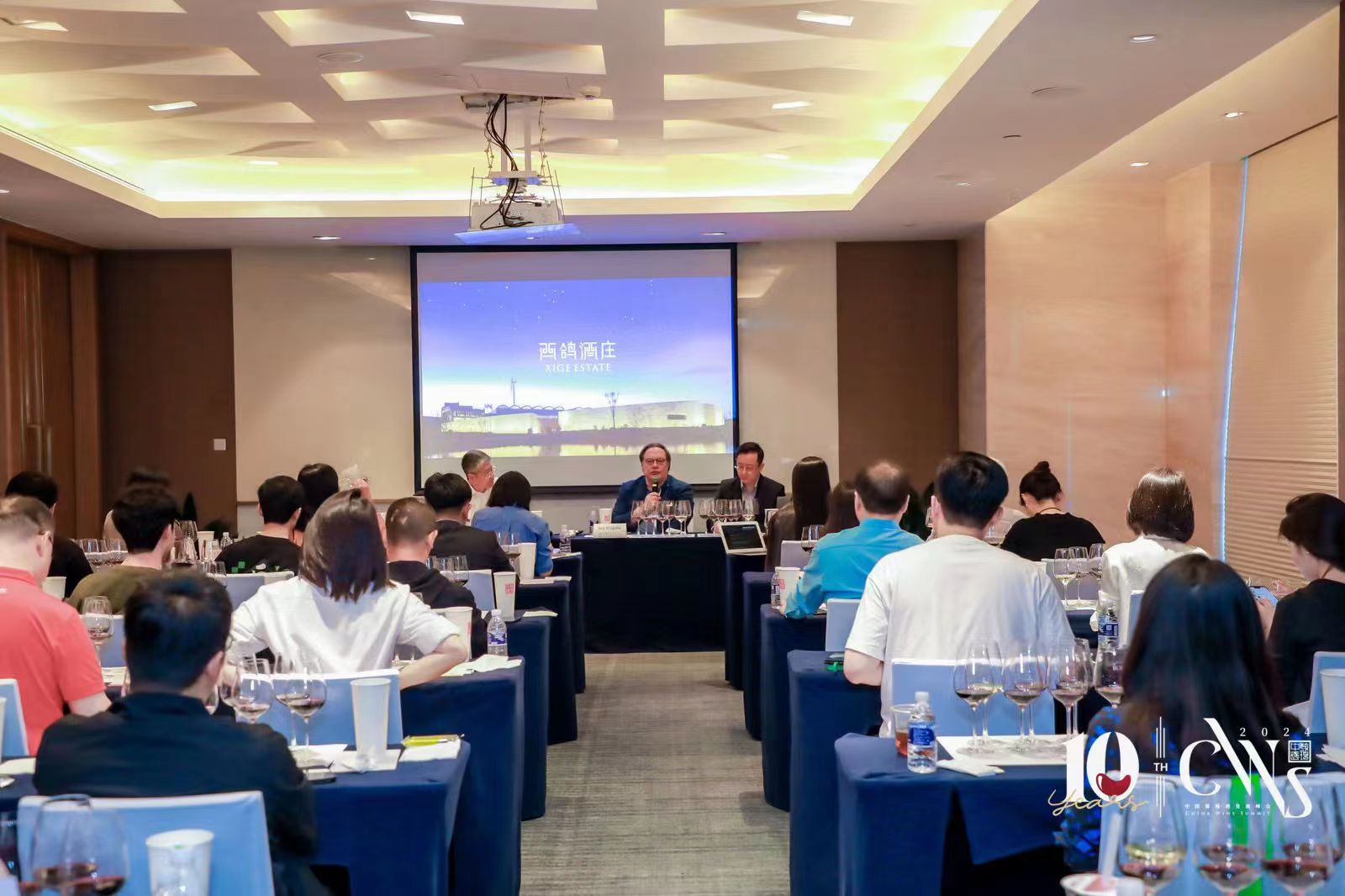
XIGE Estate 2018 Cabernet Gernischt Jade Dove Single Vineyard Qingtongxia Ningxia 90
Medium saturated red. Red cherry, rose, cedar and cool mint on the slightly oak-dominated nose. Juicy, light and a bit herbal, in the mouth with good precision to its red berry and spice flavours. Offers plenty of acid lift but could use more flesh and sweetness to help offset the underlying noteworthy oaky presence. Finishes clean and long but slightly fruit-challenged and not as complex as other vintages of this wine. The 2018 vintage was not as warm as the 2017 and 2019 and I think this specific wine might have done better with just a little less/shorter oak treatment; it was aged in 75% new barrels of which 10% were of American oak. Drinking window: 2025-2032.
XIGE Estate 2017 Cabernet Gernischt Jade Dove Single Vineyard Qingtongxia Ningxia 94
Good full red. Dark red plum, truffle, mocha, cedar and coconut on the rich, complex showy nose. Enters luscious, creamy and sweet, with dark red cherry, pipe tobacco, candied violet, almond paste, and sweet spice flavours and a texture that is at once suave yet chewy. In a fairly rich, mouthcoating style with plenty of oak presence but happily, also plenty of lift and definition, with a cracked black pepper and coconut element on the long and still youthfully tactile finish. This was the first Jade Dove monovariety Cabernet Gernischt wine ever made by XIGE Estate: you know, call it beginner’s luck or what you will, but with a wine this good right off the bat, I’d start believing in the variety too. Granted, this 2017, while balanced, is heavily oaked and lusciously rich, not exactly the wine style that owner Zhang Yanzhi prefers (he trained with the super-talented Jean-Claude Berrouet of Trotanoy, La Fleur-Petrus, Magdelaine, Dominus and of course Petrus fame so you can understand where he’s coming from and why a rich ripe wine may not be exactly his ideal quaff). Back in 2017, the Gernischt vines were 20-21 years old, as they were first planted in 1997/1998. The 2017 vintage was aged in 100% new oak; about 80% of the oak was French and 20% was American. Drinking window: 2025-2036.
XIGE Estate 2019 Cabernet Gernischt X Qingtongxia Ningxia 94+
Bright red-ruby. Musky red and black cherry, smoky herbs, mocha, balsamic oils, vanilla and a candied floral topnote on the deep rich captivating nose. Velvety but also elegant and seamless, with lovely inner-mouth creaminess to the red cherry, blueberry pie, and candied violet flavours. Very intensely flavored, very thick and yet suave, this finishes ripely fruity, with a focused and vibrating quality. This impressive red wine is still very young and will need at least another four or five years in a good cellar to show its best, hence the ‘+’ on my score. For sure, this and XIGE’s single vineyard Cabernet Gernischt Jade Dove really showcase just how good the 2019 vintage was in this part of Ningxia. The “X” is made with a super-selection of the estate’s best Cabernet Gernischt grapes, selected from what were at the time 23 years old vines planted on sandy soil with gravel. Aged for twelve months in 30% new oak barrels (100% French oak). Only about 12,000 bottles produced. Made only in the best vintages, the 2019 ‘X’ is to date, still the only vintage of this wine made. Drinking window: 2028-2040.
XIGE Estate 2017 XIGE Estate Red Wine Qingtongxia Ningxia 94
Bright, dark red with ruby highlights. Beautifully forward, enticing aromas of dark fruits, tobacco, camphor, cedar, graphite and cocoa. Brooding and powerful, but with ripe, suave easygoing black cherry, licorice, mineral and minty coffee flavours nicely framed by the wine’s firm but polished tannic spine. Very well-balanced, this should be long-lived. Well done here: make no mistake, this is a world-class Bordeaux-styled blend. Drinking window: 2025-2038.
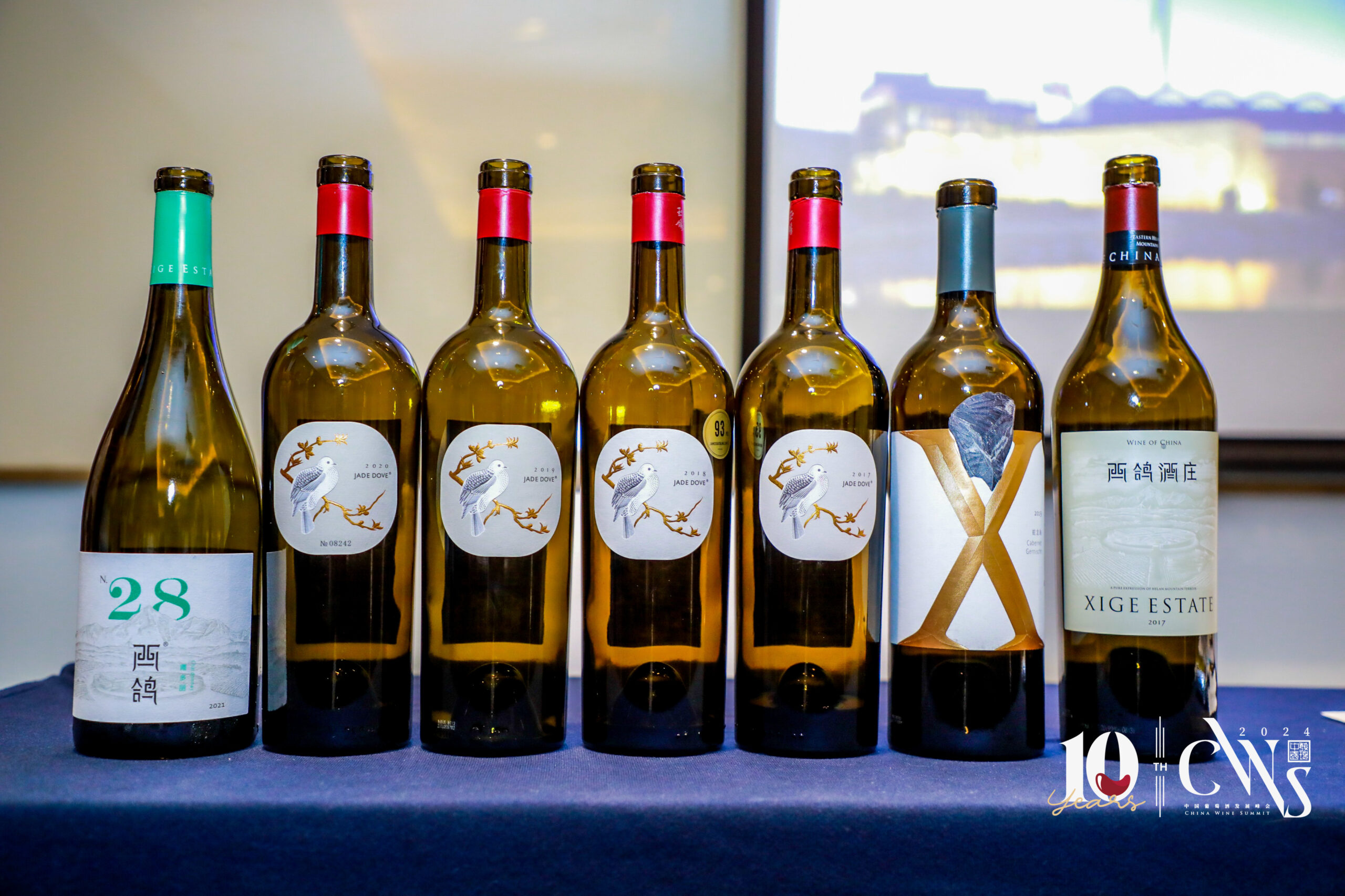

 English
English
